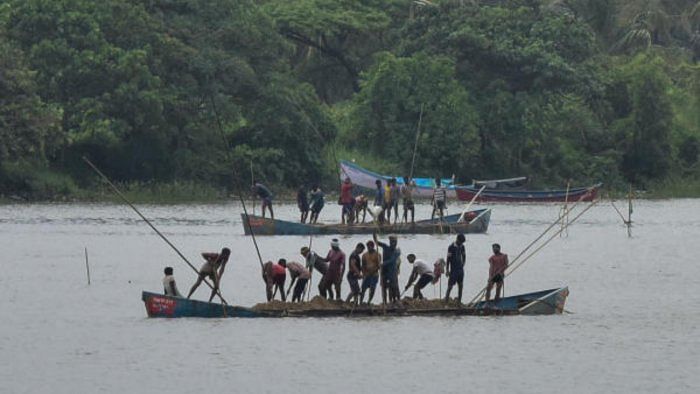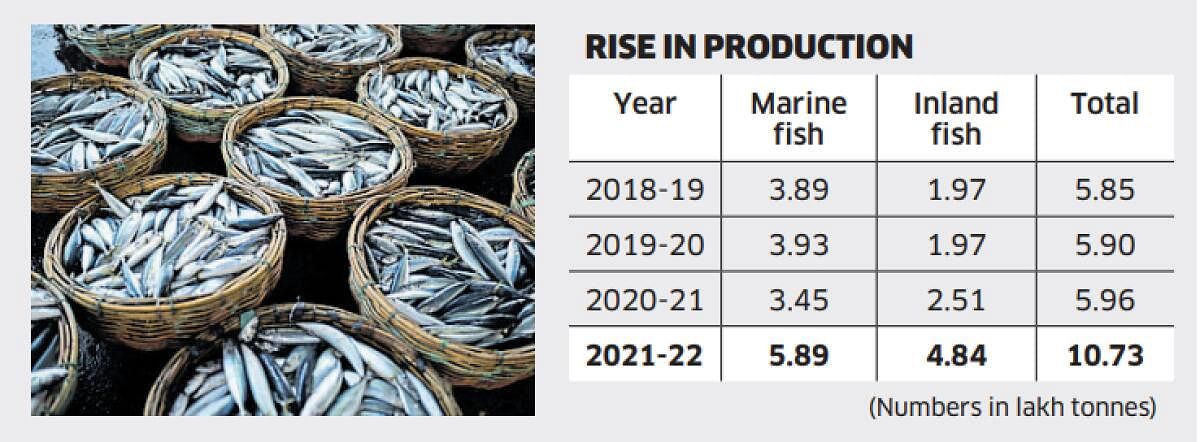

The Covid-19 pandemic left fishermen across the state in a lurch, but it has had a positive impact on Karnataka’s fish production, officials said.
According to data by the Karnataka fisheries department, the production of marine fish, which was hovering close to 3.9 lakh metric tonnes since 2018-19, has gone up by 70% from 2020-21 to 2021-22. Officials said the trend has continued in 2022-23.
“During the pandemic, fishing activities almost came to a standstill as fishermen did not venture into the waters for nearly six months. This helped the aquatic ecosystem to replenish itself, and hence, we are seeing a rise in production since last year,” said Ramacharya, director of the Department of Fisheries.
Explaining how the aquatic ecosystem could have evolved during the pandemic, Prof T V Ramachandra from the Indian Institute of Science (IISc) said that undisturbed waters reduce the anthropogenic stress on the ecosystem.
“Human activities lead to anthropogenic stress on the aquatic ecosystem and we have seen that the fishermen were overexploiting the resources in many basins. This was prevented during the pandemic, and hence the results,” he said.
He added that this specifically helped the juvenile fish.
“Apart from general interventions, it is important to avoid interventions to the breeding areas. Many fishermen would neglect the breeding areas and catch juvenile fish. This would result in a decline in production,” he explained.
Officials from the fisheries department added that the quality of fish had also improved owing to a reduction in pollutants during the pandemic.
Inland fish production has also gained popularity in the last two years, and has increased by 92% between 2020-21 and 2021-22 resulting in an 80% increase in overall fish production during the same period.
“With respect to inland fisheries, we have focused on seed stocking and opened in-situ rearing sites close to reservoirs. These are yielding results,” Ramacharya said.
However, experts warned that it is important to sustain the growth. “Scientific management is the key to ensuring sustained growth,” prof Ramachandra said.
Echoing the opinion, senior officials from the fisheries department stressed the need to implement stringent norms.
“There is a need to regulate the activities. Though fishing is banned during the breeding season, a few venture out. We need to monitor that. We are also creating awareness on the size of nets and mesh to ensure that fishermen do not catch juvenile fish. Many more norms need to be put in place,” a senior official said.
Though the official numbers are yet to be determined, officials estimate that at least six lakh metric tonnes of marine fish were produced during 2022-23 and the total production had touched 11 lakh metric tonnes. Till December end, the department had recorded a total production of 7.5 lakh metric tonnes.